Media
Blogs
KOLOR
"The standardized portraits have a surprising impact."More
dpreview.com
"Folds, crevices and pores that are often invisible under normal viewing conditions are shown in extreme detail in his 900MP images. "More
The Verge
"An industrial robot redefines the close-up"More
wppi online
"Part of the reason for the interest is that Boschung’s process for creating these incredibly detailed gigapixel portraits is as fascinating as the end results."More
More Blogs
Broadcast
Presentations
Newspapers
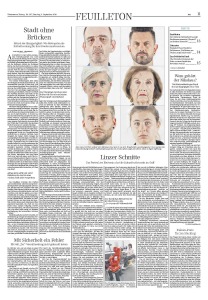 |
"Linzer Schnitte"Süddeutsche Zeitung |
FAQ English
1) Please explain the idea behind Face Cartography and how you came up with it.
This experience gave birth to the concept “The Machine View,” on which the method “RoboPhot” is based. Face Cartography is the first project in the world using this method. I wanted to replace the photographer with a machine; replace my subjective perspective with an objective one; replace analog pictures with digital ones in order to substitute the real portrait with a virtual portrait. Also I want to replace just few pixels with a gazillion of pixels.
What interests me most is the question: do the viewers of my portraits notice the deception? If they do, is it conscious or instinctive? One would assume that their eyes and minds should be trained by now. Every day they see pictures of manipulated faces in advertising: photo-shopped, beautified, distorted, and optimized. But what is their reaction when they stand in front of an archetype 900-million pixel mega-portrait? A cartographed face can be really eerie and disturbing. It does not convey any emotions. The portrait combines 600 single images, taken by a robot within 20 minutes.
In addition, the picture does not become blurry when you step closer. To the contrary, it reveals more and more and more details – pitiless and raw. That creates a dilemma/internal conflict for the viewer: the instinct warns “something is wrong,” whereas the mind takes the portrait for real due to its richness in details.
With “Face Cartography” I can stimulate this internal dialogue and thereby exemplify the limits between reality and virtuality.
To me, my mega-portraits are a metaphor of our times – driven by big data and machines such as smartphones, computers, and servers creating a world we perceive as real even though it is highly artificial.
2) What is the greatest challenge for creating a Face Cartography portrait?
There are numerous challenges. People have to sit more or less still for 30 minutes. That is why I use an old barber chair where I can fixate the head of the model. Because we are working in the field of macro photography you have only two to three millimeters depth of field. To overcome this problem/ handicap I shoot many pictures at different focus levels which are stacked in the postproduction to one picture, which has a depth of field of about 30 millimeters. Because the robot does not move around the nodal point you have parallax problems (seeing things from different angles depending on the moving viewpoint) and a mosaic pattern of pictures which normal settings in stitching software do not handle.
The biggest challenge was to create a software interface that enables me to guide the robot from my computer. Robots are good workers but quite dumb. The robot shoots in a cadence of one picture per two second. That means: every two second 25 MB are flowing to your system. For this you need a fast computer, because every picture is named on the fly with its exact position and placed in the appropriate folder. This software was written exclusively for this project.
Another huge problem was the flash generator. In the beginning of the project I had to cool flash heads with ice because of the high frequencies and short loading cycles. Luckily, the Scoro S 32000 RFS 2 from broncolor
nneren Dialog fördern und so die Grenze zwischen Realität und Virtualität fühlbar machen. Die Mega-Porträts sind auch eine Metapher für die heutige Zeit, die geprägt ist von Bigdata und von Maschinen wie Smartphones, Computern und Servern, die eine neue Welt erschaffen, die wir Mensch solved this problem. It is one of the very few flash generators able to cope with these extraordinary demands. It also has a short flash frequency which helps to freeze the image and keeps the color temperature very stable.Printing the images is another challenge. I tested a lot of printing systems. I found that a Lamda Printer best fits my needs. A laser is exposing photographic paper which is then developed in chemicals. I could not find an inkjet printer which delivered the same quality and feeling of depth. The limitation with the Lambda is the size which stops at 180cm and there are only about 10 printers of that size worldwide.
3) How do your subjects feel about being photographed so many times by your RoboPhot device? Is it intimidating to them? Do they worry the photos will reveal too much information about their face?
Some people think the machine is eating their soul step by step and transfers the information in the computer. A person who sits on the RoboPhot chair has to be quite self-confident and has to trust me. The front of the lens moves very close in front of their face. I am always surprised how fearless people are and how they trust a technology they do not know. For safety reasons I am working with a dead-man's safety system. During the whole process, I have to hold down a button. The entire system stops immediately, as soon as I let go. I talk constantly to the person and explain them every little step which comes and what I can see on my monitors. For me it is like flying with a helicopter over a landscape. I discover so many details I never would be aware in a normal encounter with the person. Many persons say after the sessions: "It is like meditation. I could see my face with my inner eye." Many people close the eyes when the robot moves over other parts of their lower face. I have to be careful that they do not lose their normal tension, which leads to small movement of the whole body. There are of course persons, who do not want to be cartographed by RoboPhot. They do not want to see themselves so close and with so much detail. But for most people the process being photographed by a robot, which normally builds cars, is a great and lasting experience. They enjoy discovering their face in a size and resolution they have never seen before. The pictures are only intimidating on the surface. The face becomes a neutral icon or a sculpture of the person’s face, which does not reveal anything about the person’s character.
4) Do you also do traditional photo portraits? How do you feel traditional portraiture differs from Face Cartography?
Yes I do. And love to tell whole stories with one picture, to talk with people and inventing situations to condense ideas. But you work always under pressure, because you never know, if you are on the right path.</p
ich den Kopf des Models fixieren. Da ich in einem fotografischen Makrobereich arbeite, stehen mir nur rund drei Millimete>
Face Cartography is a totally different world. Shooting with RoboPhot is stress free for me, because I am just the operator, who is documenting a landscape of a face with a device.
It is a brutally honest way to shoot portraits. There is no cheating, no hiding or pretending. The light is clinically bright with no interpretation. Every person is treated the same way by the machine.
In traditional portrait sessions people try to pose and to send emotions/messages with their face expression. Photographers try to interpret with light and shooting angles. The result is a short very short moment of a dialog between two persons captured on an image. The time frame at Face Cartography is 20 minutes and takes 600 shots. Far too long, for pretending. The person has to strip their mask of facial movements. With Face Cartogaphy the archetypal portrait of a person is captured. It is the pure landscape of a face. A neutral, high resolution document.
5) You also photograph insects. What appeals to you about capturing an insect photo using RoboPhot?
Face cartography is the artistic and philosophical approach to use the devise RoboPhot. Documenting insects and paintings is the technical application of the cartography process. I am fascinated to zoom in from a big overview to the smallest details like the tentacles of insects or the brush stroke on a painting. These details appear 20 times magnified on your screen. You see more than in real life without the need for a microscope. It is impressive how fast you can go through gigabytes of data.
There are many collections of paintings, engravings or other historical valuables which are hidden in archives and not accessible to the public. It is one of my dreams to make all these wonderful collections accessible. It is like with Google earth where you can explore the whole world on your computer. But RoboPhot starts discovering the world, where Google Earth stops.
The big advantage of RoboPhot is the removed scanning process which allows you to document large areas without touching or moving the subject.
6) Do you have other plans for your Face Cartography project? If so, what are they?
There are many projects in my head. But first I would like to have an exhibition showing 10 of the 2x2 meter mega-portraits. The goal is to have people leaving the room with Goosebumps without knowing why.
Than I would like to embark on a journey "People, of the 21th Century" like Sanders did. For this I would like to travel around the world and install my mobile RoboPhot on location.
Another project is to combine data from genetic sequencing with face cartography. But this is another story.
CV Daniel Boschung
Daniel Boschung (1959) is a Swiss advertising and reportage photographer. He published his pictures in international magazines and newspapers like Time Magazine, Newsweek, or Geo Saison. In the advertising field he created many Swiss campaigns. He is living near Zurich in Switzerland.
FAQ German
1. Können Sie uns die Idee hinter der Gesichts-Kartografie und wie Sie auf diese Idee gekommen sind, erklären?
Meine Karriere als Fotograf startete ich in den 1980er Jahren als Reporter in New York. Damals waren grosse Porträtinszenierungen en vogue. Die Arbeiten von Annie Leibovitz fürs Rolling Stone-Magazin beeinflussten mich stark, zugleich faszinierten mich aber auch die Altmeister der dokumentarischen Portraitfotografie: Pen, Avedon und vor allem das epochale Werk «Menschen des 20. Jahrhunderts» von Sanders. Ich stellte mir damals zum ersten Mal die Frage: Wie muss man die Menschen des 21. Jahrhunderts dokumentieren, damit die Menschen im 22. Jahrhundert einen Eindruck bekommen, was uns bewegt hat?
Die zündende Idee hatte ich erst Jahre später. Nach einem schweren Mountainbike-Unfall landete mit gebrochenem Rücken im Spital (nur dank Glück bin ich heute nicht querschnittsgelähmt). Die Ärzte schoben mich in die Computer-Tomographie-Röhre. 45 Minuten lang durfte ich mich nicht bewegen, während sich die Maschine ein genaues Bild von mir verschaffte. Dank der CT-Aufnahmen konnte später ein Operationsroboter acht Titanschrauben millimetergenau in die zerschmetterten Lendenwirbel einsetzen – präziser, als das ein Mensch hätte tun können. Das war die Geburtsstunde des Konzepts «The Machine View», auf dem die Methode «Robophot» baut und aus dem sich das Projekt «Face Cartography» herauskristallisierte: Ich wollte mich als Fotograf durch eine Maschine ersetzen, meine subjektive Betrachtung durch eine objektive, analoge Fotos durch digitale, reale Porträts durch virtuelle, wenige Pixel durch viele.
Die Frage, die mich dabei am meisten interessiert: Merken die Menschen, die eines «meiner» Porträts betrachten, den Schwindel – und wenn ja, bewusst oder instinktiv? Eigentlich sollten ihre Augen und ihr Verstand geschult sein: Täglich betrachten sie Bilder aus der Werbeindustrie, sie alle sind manipuliert – retouchiert, geschönt, verzerrt, optimiert. Was also passiert, wenn sie vor einem 900 Millionen Pixel grossen Porträt stehen? Denn ein kartographiertes Gesicht kann ganz schön irritierend und verstörend wirken... Erstens transportiert es keine Emotionen. Das Porträt besteht aus 600 Einzelfotos, die mein Roboter innerhalb von 20 Minuten geschossen hat. Zweitens verliert das Bild nicht an Schärfe, wenn man näher herantritt, im Gegenteil, es offenbaren sich immer mehr Details, schonungslos und ungeschönt. Beim Betrachter entsteht nun ein innerer Konflikt: Der Instinkt sagt dem Verstand, dass etwas nicht stimmen kann, der Verstand aber hält das Porträt wegen der Detailschärfe für echt. Mit «Face Cartography» kann ich den iur stabil bleibt. Die kurze Abrennzeit des Blitzes hilft, das Bild verwackelungsfrei fest zu halten.
Um die Bilder vergrössern zu können testete ich eine ganze Reihe von Drucksystemen und fand dann im Lambda Printer die beste Lösung für meine Ansprüche. Ein Laser belichtet das Fotopapier, das anschliessend mit Fotochemikalien entwickelt wird. Bei den Tintenstrahldruckern konnte keiner die geforderte Qualität liefern. Die einzige Beschränkung des Lamda Druckers ist die Grösse. Bei 180cm ist Schluss. Und es gibt nur noch etwa zehn Stück davon auf der Welt.
3) Wie fühlen sich die Menschen, wenn sie so oft fotografiert werden? Schliesslich müssen sie lange ruhig sitzen. Ist das einschüchternd? Haben sie Angst, dass die Bilder zu viele Informationen über ihr Gesicht verraten?
Das ist tatsächlich für manche Personen einschüchternd. Es gibt solche, die glauben, dass die Maschine ihre Seele langsam auffrisst und die Informationen darüber in einem Computer speichert. Jemand, der sich von RobotPhot ablichten lässt benötigt viel Selbstvertrauen. Die Linse der Kamera bewegt sich sehr nahe am Gesicht. Mich überrascht die Furchtlosigkeit der Menschen immer wieder und genauso ihr Vertrauen, dass sie einer Technologie entgegenbringen, die sie letztlich nicht kennen. Aus Sicherheitsgründen arbeite ich mit einem «dead-man's safety system». Während der gesamten Prozedur muss ich einen Knopf drücken. Das gesamte System stoppt sofort, wenn ich ihn loslasse. Ich rede konstant mit meinem Gegenüber und erkläre ihnen Schritt für Schritt was ich auf meinen Monitoren sehe.
Der fotografische Prozess ist für mich wie das Kreisen mit einem Helikopter über einer Landschaft. Ich entdecke dabei so viele Dinge im Gesicht, die ich bei einer normalen Begegnung niemals sehen könnte. Manche meinen nach der Fotosession, dass es wie Meditation sei und dass sie ihr eigenes Gesicht mit einem inneren Auge sehen konnten. Andere schliessen die Augen, während der Roboter über die tieferen Partien ihres Gesichtes fährt. Manchmal ist es schwierig, dass die Leute ihre natürlichen Spannung zu halten und nicht zusammensacken.
Die Allermeisten finden es eine spannendes Erlebnis, sich von einem Roboter fotografieren zu lassen, der im normalen Leben Autos baut. Und sie schätzen es danach, ihr Gesicht in einer Grösse und Auflösung zu entdecken, wie sie es vorher noch nie konnten. Die Bilder sind nur an der Oberfläche intim. Das Gesicht wird zu einem neutralen Icon oder einer Skulptur, die letztendlich nichts über den Charakter verrät.
4) Beschäftigen Sie sich auch mit klassischer Porträtfotografie? Worin unterscheiden sich eigentlich die beiden Porträtarten?
Mit der klassischen Porträtfotografie kann ich in einem Bild eine Geschichte erzählen, ich trete in einen Dialog mit meinem Gegenüber. Ich kann den Porträtierten in einer Situation fotografieren, die ich schaffe und kann so Ideen verdichten und visualisieren. Der Nachteil ist, dass bei der klassischen Porträtfotografie immer ein gewisser Stress herrscht, da du als Fotograf nie sicher bist, ob du den richtigen Weg gefunden hast.
Gesichts-Kartografie eine andere Welt. Das Fotografieren mittels RoboPhot ist für mich ohne Anstrengung. Ich bin nur der Operator, der die Landschaft eines Gesichtes als Einheit dokumentiert.
Es ist ein brutal ehrlicher Weg in der Porträtfotografie. Es gibt nichts zu verstecken, nichts zu täuschen, nichts zu beschönigen. Das Licht ist klinisch hell und lässt keinen Spielraum zu. Jeder Porträtierte wird von der Maschine genau gleich behandelt.
Bei einem traditionellen Porträt versucht der Porträtierte mit seinen Posen Botschaften zu vermitteln. Der Fotograf interpretiert diesen Gesichtsausdruck mit Licht und dem Aufnahmewinkel. Das Resultat ist eine Momentaufnahme des Dialogs zwischen zwei Personen, gebannt auf ein Bild. Der Zeithorizont der Gesicht-Kartografie ist zwanzig Minuten mit 600 Auslösern. Viel zu lang um etwas vorzutäuschen. Mit der Gesicht-Kartografie wird ein archetypisches Abbild erfasst, die re
nütze einen alten Coiffeurstuhl. So kann ine Landschaft eines Gesichtes, ein neutrales, hoch aufgelöstes Dokument.
5) Sie fotografieren auch Insekten. Was bringt Sie dazu hier den RobotPhot einzusetzen?
Gesicht-Kartografie ist eine künstlerische und philosophische Annäherung an das, was RoboPhot abbildet. Die fotografische Dokumentation von Insekten und Gemälden ist eine technische Anwendung des kartografischen Prozesses. Mich fasziniert das reinzoomen von der grossen Totalen bis ins kleinste Detail, zum Beispiel zu den Tentakeln eines Insektes oder der Pinselstruktur in einem Gemälde. Diese Details erscheinen auf dem Schirm 20 mal vergrössert. Das macht mehr sichtbar als bei einer normalen Betrachtung ohne Mikroskop. Es ist beeindruckend wie schnell wir uns durch riesige Datenmengen bewegen können.
Es gibt viele Sammlungen von Gemälden, Stichen oder historischen Kostbarkeiten, die in irgendwelchen Archiven vor den Augen der Öffentlichkeit versteckt sind. Es ist ein Traum von mir alle diese versteckten Schätze für die Öffentlichkeit sichtbar zu machen. Es ist wie mit Google Earth, mit dem man die ganze Welt vom Computer aus entdecken kann. Aber RoboPhot beginnt mit der Entdeckungsreise wo Google Earth stoppt.
Der entscheidende Vorteil von RoboPhot ist der berührungslose Scanvorgang, welcher es erlaubt grosse Flächen zu dokumentieren ohne sie berühren zu müssen.
6) Gibt es noch andere Anwendungsgebiete für das Projekt Gesicht-Kartografie?
Zumindest in meinem Kopf gibt es fast unendlich viele. Aber als erstes möchte ich zehn meiner 2x2 Meter Mega-Porträts ausstellen. Die Besucher sollen die Ausstellung mit Gänsehaut verlassen, ohne genau zu wissen warum. Das möchte ich gerne.
Dann würde ich gerne um die Welt reisen und die «Gesichter des 21. Jahrhunderts» mit RoboPhot kartographieren. Ähnlich wie es Sanders machte.
Und last, aber not least, möchte ich gerne genetische Daten mit der Gesicht-Kartografie kombinieren. Aber dahin ist noch ein weiter Weg.
1 CV Daniel Boschung
Daniel Boschung (1959) ist Schweizer, spezialisiert auf Werbe- und Porträtfotografie. Seine Bilder sind in internationalen Magazinen und Zeitungen wie Time Magazine, Newsweek oder Geo Saison erschienen. In der Werbung zeichnet er für verschiedene Schweizer Kampagnen verantwortlich. Daniel Boschung lebt in der Nähe von Zürich.
FAQ French
C'est l' interview de Focus Numerique par Arthur Azoulay
[1]
Focus Numérique – Daniel, pouvez-vous vous présenter ?
D.B. – Daniel Boschung (1959), je suis un photographe de publicité et de reportage suisse. Mon travail a été publié dans des magazines internationaux comme Time Magazine, Newsweek ou Geo Saison. J'ai réalisé de nombreuses campagnes de publicité en Suisse. Je vis à Zurich.
[2]
Focus Numérique – Vous avez développé un système de reproduction en ultra haute définition à l'aide d'un bras robotisé et d'un reflex en macro. Comment est née cette idée ?
D.B. – J'ai toujours voulu dépasser les limites de la taille du capteur de mon appareil photo. Du temps de l'argentique, il suffisait d'opter pour un appareil avec une plus grande taille de film pour obtenir une meilleure résolution. Il a fallu un sérieux accident de VTT pour enfin trouver l'idée. J'étais à l'hôpital avec le dos cassé. J'ai eu beaucoup de chance de ne pas rester paralysé. Les médecins m'ont fait une IRM. Je n'avais pas le droit de bouger afin que l'appareil puisse obtenir une image de mon bas dos tranche par tranche. Ce scanner a ensuite guidé un robot pour qu'il m'installe 8 vis en titane dans l'une de mes vertèbres avec une précision qui dépasse ce qu'un humain aurait pu faire. Cette expérience a donné naissance au concept RoboPhot.
[3]
Focus Numérique – Pouvez-vous nous expliquer ce concept ?
D.B. – RoboPhot est un bras robotisé, généralement utilisé dans l'industrie d'assemblage automobile. Il est associé à un Canon EOS 5D Mark II et un 180 mm macro. Tous les mouvements sont contrôlés par ordinateur. Le système capture des centaines d'images de tous les détails du sujet grâce à un logiciel spécialement développé.
[4]
Focus Numérique – Le processus semble très automatisé. Comment avez-vous conçu la communication entre le robot, le boîtier et le logiciel ?
D.B. – Nous avons développé un logiciel spécifique. Ce n'est pas seulement prendre des photos. Toutes les 2 secondes, 25 Mo de données sont traités. Pour cela, nous avions besoin d'un ordinateur puissant. Chaque photo est renommée à la volée en fonction de sa position et enregistrée dans le dossier approprié. Un autre problème a été la gestion du système d'éclairage au flash. Au début, je devais refroidir les têtes de flash avec de la glace à cause du nombre d'éclairs. Heureusement, le Scoro deBroncolor a résolu ce problème. C'est un des rares générateurs à supporter ce type de demande. Il dispose aussi d'une très courte fréquence d'éclair et d'une température de couleur stable. Pour la capture, j'utilise un canon EOS 5D Mark II avec un 180 mm macro en connecté.
L'impression des images a aussi été un challenge. J'ai testé beaucoup de solutions d'impression et c'est la Lambda qui a le mieux répondu à mes attentes : exposition au laser et développement argentique. Je n'ai pas trouvé de solution en jet d'encre qui procure la même qualité et le même sentiment de profondeur dans les images. La limite de la Lambda est la taille du papier avec une largeur maximale de 1,8 mètre. Il y a seulement 10 Lambda de ce type au monde.
[5]
Focus Numérique – Quelle est la plus haute définition d'image que vous ayez réalisée ?
D.B. – C'était une reproduction d'une peinture de fleur. Le tableau original faisait 60 x 70 cm et le fichier final pesait 14 Go. Quand vous ouvrez des fichiers de ce type avec Photoshop, vous pouvez vous armer de patience et de café !
[6]
Focus Numérique – Vous avez opté pour un reflex 24 x 36 mm. Pourquoi pas un moyen format avec un capteur de 50 ou 80 millions de pixels ?
D.B. – Car le processus est basé sur une lentille télémétrique. Le gros problème est d'avoir suffisamment de distance avec le sujet sans rompre certaines règles optiques imposées par le système. Et le moyen format pèse plus lourd, ce qui posait problème avec le robot.
[7]
Focus Numérique – Votre système peut cartographier le sujet et estimer la profondeur de champ. Comment est ce que cela marche ?
D.B. – Je peux guider le robot à différents points de référence et estimer la profondeur de champ et l'intégrer au logiciel. Nous avons testé des mesures laser mais sur des sujets humains, on ne peut pas les utiliser à cause des yeux.


[8]
Focus Numérique – L'assemblage des images se fait-il de manière automatique ou manuelle ? Est-ce le même principe pour des sujets en 2D et en 3D ?
D.B. – Un peu des deux. Pour les sujets 3D, j'utilise Helicon Focus. Pour les assemblages, Autopano Giga.
[9]
Focus Numérique – Pour les sujets humains, comment arrivez-vous à faire qu'ils restent parfaitement immobiles pendant toute la durée du processus ?
D.B. – La tête des sujets est fixée, comme pour la réalisation de portraits à l'ancienne. Pour les légers mouvements du visage et des yeux : c'est un travail manuel.



[10]
Focus Numérique – Vous proposez un service de reproduction et des portraits.
Quels sont vos clients ?
D.B. – Dans l'univers de la reproduction d'art, toutes les personnes qui souhaitent rendre accessible leur travail au public et à de potentiels acheteurs. Le gros avantage de RoboPhot est qu'il est possible de travailler sur différentes parties du sujet sans avoir à le toucher ou le déplacer. Je suis toujours fasciné en zoomant depuis une vue d'ensemble jusqu'aux plus fins détails, comme les coups de pinceau par exemple. Ces détails sont magnifiés 20 fois sur l'écran. On en voit plus que par la vision directe sans microscope. Pour les portraits, c'est mon projet personnel.
[11]
Focus Numérique – Pourquoi avoir besoin de si hautes définitions ?
D.B. – Pour des reproductions d'art, vous avez la possibilité de zoomer depuis une vue d'ensemble jusqu'aux détails microscopiques avec un ordinateur et une connexion internet standard. Jusqu'à aujourd'hui, il était possible de photographier une vue d'ensemble ou un détail sur une seule image. Pour combiner les deux, il faut impérativement monter en définition. C'est ce que RoboPhot propose.



[12]
Focus Numérique – Pour vous, quelles sont les applications d'un tel système ?
D.B. – Avec l'arrivée des nouveaux moniteurs 4K, une nouvelle manière de regarder voit le jour. C'est impressionnant de voir à quelle vitesse ont peut aller avec autant de gigaoctets de données. Il y a beaucoup de collections de peintures qui sont cachées dans des archives et non visibles par le public. C'est l'un de mes rêves de les rendre accessibles à tous. C'est comme avec Google Earth et la possibilité d'explorer le monde entier depuis votre ordinateur. Robophot commence à découvrir le monde là ou Google Earth s'arrête.

